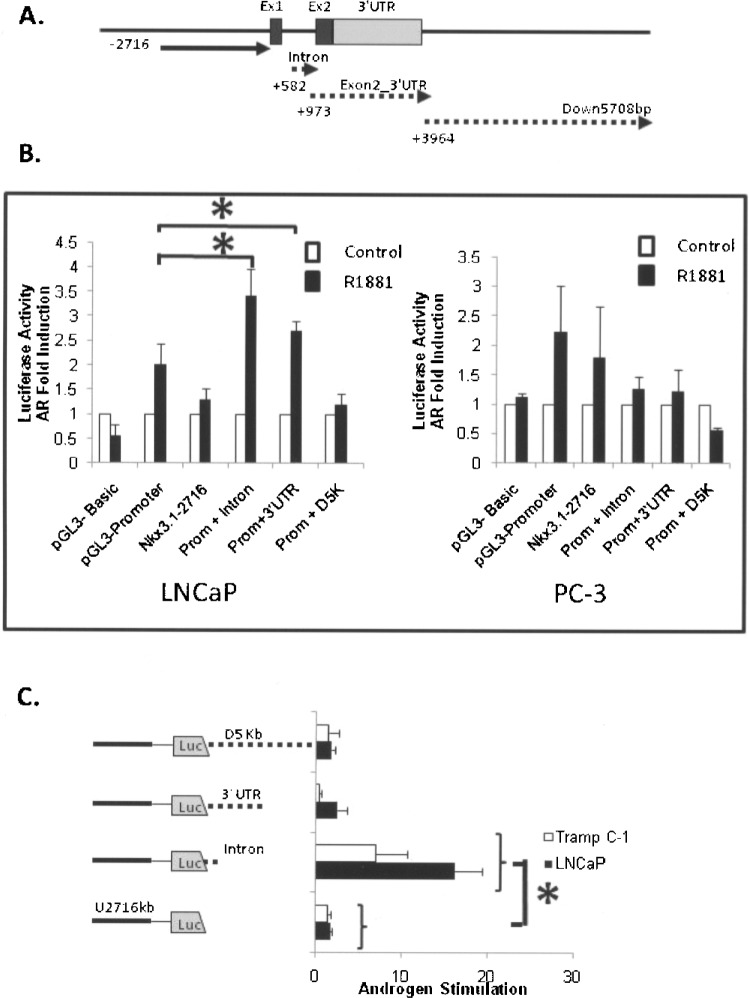Figure 2.
Androgen transcriptional responses elicited by DNA fragments within and 3′ to the mouse Nkx3.1 gene. (A) A diagram of the gene with the relative position of the cloned DNA fragments is shown. The dotted lines denote the fragments cloned into the pGL3-promoter in front of the minimal SV-40 promoter and into the Nkx3.1-2716 vector behind the luciferase coding segment. (B) The three gene fragments shown in (A) (intron, Exon2_3′UTR, and Down 5708bp) cloned into the pGL3-promoter vector were assayed for androgen stimulation in LNCaP cells as described in Materials and Methods. Following transfection the cells were treated with 10 nM synthetic androgen R1881 (filled bars) or vehicle (open bars) and lystaes from the cells analyzed for luciferase activity. The activity derived from androgen-treated cells was compared with the activity derived from vehicle-treated cells and the resultant data plotted as an androgen (AR) fold induction. As controls, plasmids with no promoter (pGL3-basic), the minimal SV40 promoter (pGL3-promoter), and the 5′ Nkx3.1 promoter segment (Nkx3.1-2716) were transfected into LNCaP cells and the entire complement of vectors were transfected into the non-androgen-responsive PC-3 cell line. The asterisks denote statistical difference in androgen induction between the test construct and the parental pGL3-promoter plasmid (p < 0.05). (C) The three DNA fragments shown in (A) were cloned into the Nkx3.1-2716 vector after the luciferase coding sequence and the resulting clones evaluated for androgen stimulation in LNCaP cells (black bars) and TRAMP-C1 cell (open bars) as described above. Androgen stimulation was determined as the activity derived from transfected cells treated with R1881 compared to cells containing the same promoter/DNA luciferase vector that were treated with vehicle alone. The asterisk denotes statistical differences between the test plasmid and the parental control plasmid Nkx3.1-2716 (p < 0.05).

